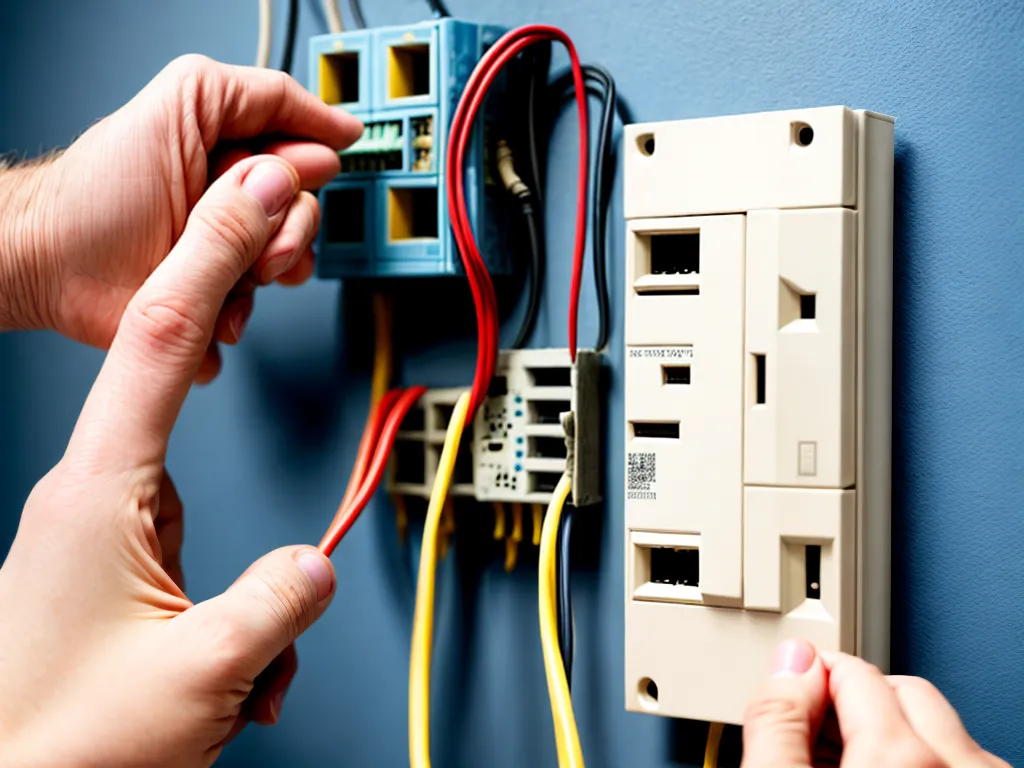
How to Rewire Your Home's Electrical System Yourself on a Low Budget
Introduction
Rewiring a home can be an intimidating task, but with proper planning and safety precautions, it is possible to rewire your home's electrical system yourself and save money. In this article, I will provide a step-by-step guide on how I was able to rewire my home's electrical system on a budget.
Assess Your Electrical Needs
The first step is to thoroughly assess your home's electrical system to determine what needs to be upgraded or replaced.
-
Examine all electrical outlets, switches, light fixtures, and appliances. Make note of any outlets that have no ground, any two-prong outlets, knob and tube wiring, aluminum wiring, or any other deficiencies.
-
Consider how your electrical needs may have changed. Do you need additional circuits for a remodeled kitchen or home office?
-
Plan where you may need new outlets, switches, or lighting fixtures.
This assessment will help you formulate a plan for the scope of the rewiring project.
Create a Rewiring Plan
With the information gathered from the needs assessment, you can now plan the details of the rewiring project.
-
Decide which sections of the home to rewire. If funds are limited, focus first on rewiring the kitchen, bathroom, laundry, and other high electrical load areas.
-
Map out new circuit routes. Plan where to run new wires and how the new circuits will be configured.
-
Develop a materials list. Make a list of all required wiring, outlets, boxes, conduit, breakers, and other supplies.
-
Determine if you need electrical permits. Most areas require permits for rewiring projects. Research permit costs and plan for extra time.
Having a well-defined plan will make the rewiring process smoother.
Safety First
Rewiring a home comes with risks of shock and electrical hazards. Safety should be the top priority.
-
Turn off power at the main breaker. Use a contact voltage tester to verify power is off before working.
-
Wear personal protective equipment. This includes eye protection, gloves, long sleeves and pants.
-
Work slowly and carefully. Rushing leads to mistakes. Take your time and be cautious.
-
Inspect all work thoroughly before turning power back on. Check for loose connections, exposed wires, faulty grounds, etc. Consider having an electrician inspect the work.
Placing safety first, above speed or cost savings, helps avoid electrical danger.
Gather the Right Materials
Once you have permits and a safety-focused plan, it's time to get the materials. For my project, I purchased:
-
Copper wiring. 12/2 and 14/2 NM cables for 15 and 20 amp branch circuits.
-
Circuit breakers. Standard, GFCI, and AFCI breakers to populate my new electrical panel.
-
Electrical boxes. Plastic boxes for most uses, metal boxes where required.
-
Conduit. EMT and flexible conduit for exposed wiring runs.
-
Outlets and switches. Standard 15 amp duplex receptacles and light switches.
-
Misc. supplies. Things like wire nuts, fish tape, cable staples, faceplates, and junction boxes.
Shopping wisely at big box electrical supply stores saved me 40% compared to a contractor.
Step-by-Step Rewiring Process
With planning and supplies secured, I was ready to safely rewire my home's electrical system.
1. Turn Off Power
I turned off power at the main breaker and verified it was off with a contact voltage tester.
2. Remove Old Wiring
I dismantled existing wiring and removed old electrical boxes and conduit. I was careful to work slowly and safely.
3. Run New Wires
I measured, cut, and installed new NM cables and conduit throughout the house. I stapled cables every 2-3 feet as required.
4. Install New Electrical Boxes
I installed new plastic and metal electrical boxes at planned locations. I made sure to attach boxes securely.
5. Connect New Wiring and Devices
I connected wires using wire nuts and terminal screws. I connected new receptacles, switches, and fixtures.
6. Install New Breaker Panel
With wiring in place, I installed the new main breaker panel and breakers. I followed precise labeling.
7. Inspect and Test
I thoroughly inspected all work and had an electrician test my system for safety before re-energizing.
8. Finish Work
With a proven safe system, I buttoned things up by patching walls, adding face plates, and cleaning up.
Taking it slow and being cautious at each step resulted in a successful and safe project.
Cost Savings
By doing the work myself and shopping wisely, I was able to save significantly compared to hiring an electrician.
-
My total material costs were $1,500. This included all wiring, boxes, conduit, the panel, and breakers.
-
The required electrical permit was $250.
-
I hired an electrician just for the final safety inspection for $200.
-
In total, I spent $1,950 to completely rewire my 2,000 sqft home.
Rewiring the home's electrical system myself saved at least $5,000 compared to hiring a contractor. The project required a lot of time and elbow grease, but the cost savings were immense.
Key Takeaways
Rewiring your home's electrical system yourself is a big project but completely doable for a diligent DIYer. The key takeaways from my experience are:
-
Assess your needs thoroughly.
-
Create a detailed rewiring plan.
-
Place safety first, always.
-
Shop around for the best electrical prices.
-
Take your time during the rewiring process.
-
Inspect everything twice before turning power back on.
By following these steps and guidelines, you can potentially save thousands of dollars by rewiring your home's electrical system yourself. Just be sure to always put safety first!